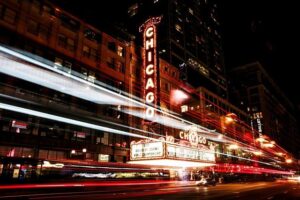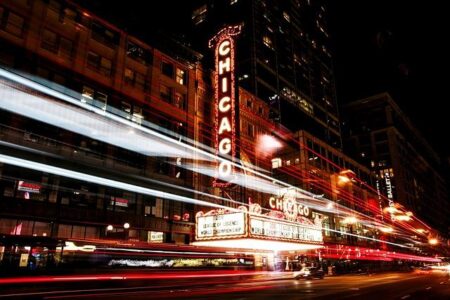Long before the Irish emerged as a dominant political force in Chicago, their roots were planted in a humble and often overlooked neighborhood known as Kilgubbin. This ramshackle slum, marked by overcrowded tenements and stark poverty, was the crucible in which the city’s Irish community forged its identity and resilience.Exploring Kilgubbin’s challenging conditions offers a revealing glimpse into the struggles and determination that shaped the rise of Irish political royalty in Chicago, decades later.
Irish Roots in Kilgubbin Reveal Humble Beginnings of Chicago’s Political Elite
Centuries ago, Kilgubbin was a dilapidated cluster of dwellings that most would overlook on a map, but it played a pivotal role as the cradle of Chicago’s Irish-American political dynasty. The community, marked by creaking wooden shanties and narrow, muddy byways, was home to generations of Irish immigrants who toiled relentlessly under harsh conditions. Despite the poverty that clung to the settlement, the spirit and resilience of Kilgubbin’s inhabitants laid the groundwork for a political influence that would resonate across Chicago for decades. The modest homes and cramped spaces were more than just shelters—they were incubators of ambition and cultural solidarity that propelled many descendants into the city’s corridors of power.
Key factors contributing to Kilgubbin’s importance:
- Strong community bonds: Tight-knit families and mutual support networks anchored the residents.
- Political mentorship: Early local leaders sharpened the skills of future politicians through grassroots activism.
- Cultural tenacity: Celebrations, language, and traditions kept heritage alive, fueling a collective identity.
| Aspect | Impact |
|---|---|
| Education | Limited formal schooling, but strong emphasis on oral history and debate |
| Occupations | Labor-intensive jobs fostering a practical understanding of working-class needs |
| Political Strategy | Focus on local alliances and voter engagement rooted in shared struggles |
What started as survival in a forgotten slum became a legacy of leadership intertwined with Chicago’s identity. Today, the once crumbling Kilgubbin is recognized less for its physical ruins and more for the indelible mark its residents have left in shaping the city’s political landscape. Their journey from hardship to prominence exemplifies the transformative power of community-driven ambition.
Living Conditions in Kilgubbin Expose Harsh Realities of Early Irish Immigrants
The living conditions in Kilgubbin were a stark contrast to the political power Irish immigrants would later hold in Chicago. Families squeezed into cramped, dilapidated housing units with barely any ventilation or sanitation facilities. Many dwellings lacked basic plumbing, forcing residents to rely on contaminated water sources. Overcrowding was rampant, with entire families sharing a single room, which bred disease and despair. The streets outside were often muddy,with few paved sidewalks,complicating everyday life amid harsh winters and scorching summers.
Key hardships faced by Kilgubbin residents included:
- Frequent outbreaks of tuberculosis and cholera due to unsanitary conditions
- Limited access to clean drinking water and proper sewage disposal
- Child labor was common as families struggled to make ends meet
- Minimal educational opportunities for the younger generation
| Factor | Condition | Impact |
|---|---|---|
| Housing | Crumbling tenements, often shared by 10+ people | Increased illness and limited privacy |
| Sanitation | Open sewers and lack of plumbing | Spread of disease |
| Employment | Low wages, perilous factory jobs | Economic instability and injuries |
| Education | Few schools, many children worked instead | Generational poverty |
From Slum to Powerhouse Insights Into the Irish Community’s Rise in Chicago Politics
In the mid-19th century, Kilgubbin was a far cry from Chicago’s bustling political corridors. This dilapidated neighborhood, marred by poor sanitation and overcrowded wooden shanties, was home to a predominantly Irish immigrant population striving to make a foothold in a new world. The harsh realities of life here—marked by economic hardship and social marginalization—drove the community to forge tight-knit bonds, nurturing a resilient spirit that would eventually propel them to political prominence. Kilgubbin’s narrow, muddy streets bore witness to the early gatherings of local leaders who began organizing for rights, better living conditions, and depiction.
Several key factors contributed to the Irish community’s ascent from Kilgubbin’s squalor to Chicago’s political powerhouse:
- Community Solidarity: Close family and neighborhood ties created a network of mutual support and political mobilization.
- Labor Activism: Irish immigrants were at the forefront of unionizing workers, advocating for fair wages and safer conditions.
- Political Machine Influence: Through strategic alliances with figures like Mayor Richard J. Daley, the Irish became a core base for the Democratic political machine.
- Education and Civic Engagement: Investment in schools and churches strengthened community identity and voter turnout.
| Era | Milestone | Impact |
|---|---|---|
| 1850s | Kilgubbin Settlement Grows | Establishment of tight-knit immigrant neighborhood |
| 1880s | Labor Movement Emerges | Irish lead key union strikes |
| 1920s | Rise in Political Office | First Irish aldermen elected |
| 1950s | Daley Political Machine | Secured Irish dominance in Chicago politics |
Preserving Kilgubbin’s Legacy Recommendations for Commemorating Chicago’s Irish Heritage
To honor the origins of Chicago’s Irish community in Kilgubbin, a purposeful effort to preserve the neighborhood’s history is essential. Community leaders and historians recommend establishing a dedicated cultural center that captures the gritty reality of life in the slum and its transformation over time. Such a center could include interactive exhibits, oral histories from descendants, and artifacts unearthed from Kilgubbin’s early years. Creating public murals and monuments throughout areas once occupied by this enclave would also serve as visual reminders of the resilience and contributions of Kilgubbin’s Irish residents.
Furthermore, advocates are calling for annual events that celebrate this heritage with conventional Irish music, storytelling sessions, and reenactments depicting Kilgubbin’s daily life. Educational programs in local schools could integrate Kilgubbin’s history into their curriculum, ensuring younger generations appreciate the community’s roots. The following table outlines priority initiatives suggested by cultural preservation groups:
| Initiative | Description | Expected Impact |
|---|---|---|
| Heritage Center | Interactive museum featuring Kilgubbin artifacts | Preserves and educates on Irish immigrant legacy |
| Public Art | Murals and monuments honoring early settlers | Raises neighborhood awareness and pride |
| Annual Festival | Celebrates Irish culture through music and storytelling | Fosters community engagement and tourism |
| School Programs | Curriculum integration of Kilgubbin history | Teaches youth about local Irish immigrant roots |
Concluding Remarks
The story of Kilgubbin serves as a powerful reminder of the humble origins that shaped Chicago’s Irish political dynasty. Long before ascending to positions of influence, these early residents endured hardship and adversity in a forgotten corner of the city.Today, their legacy stands not only as a testament to resilience and determination but also as a critical chapter in the broader narrative of Chicago’s urban and political history. Understanding Kilgubbin’s past offers valuable insight into how communities evolve and the enduring impact of those who, against all odds, helped to define the city’s character.








